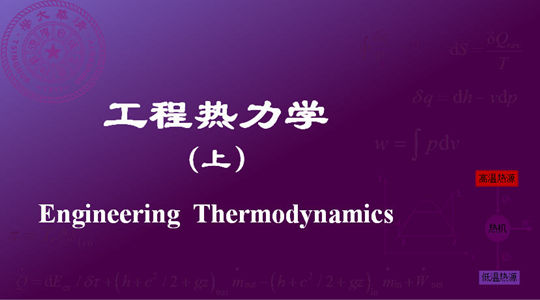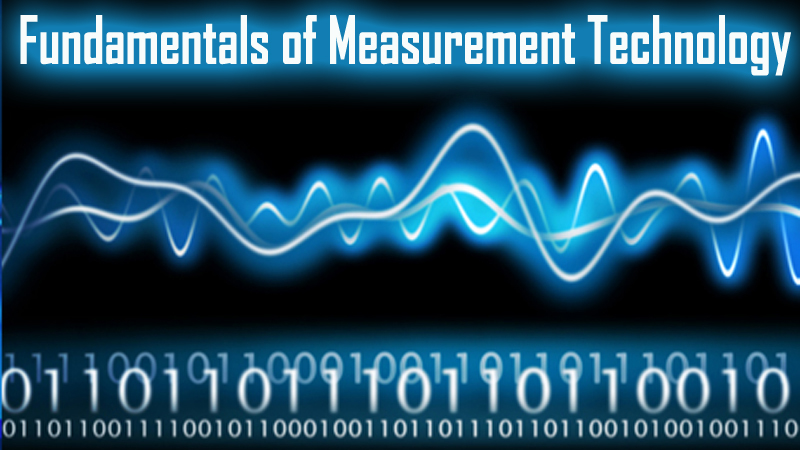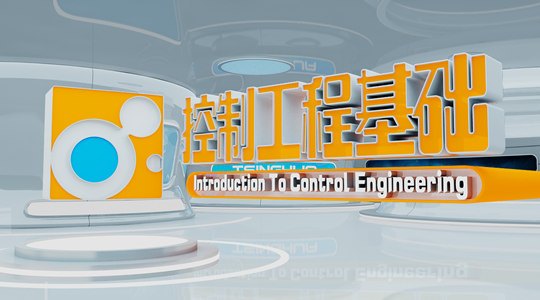
当前课程知识点:Diagnostics in Chinese Medicine > Week 10 Diagnosis methods::Pulse examination > 8.2 The regions and methods of pulse examination > 8.2 The regions and methods of pulse examination
返回《Diagnostics in Chinese Medicine》慕课在线视频课程列表
返回《Diagnostics in Chinese Medicine》慕课在线视频列表
同学们好
我们已经学习了脉象诊病的原理
下面我们学习如何诊脉
首先 我们来学习诊脉的部位
历史上诊脉的部位有很多
主要有
寸口诊法
三部九候诊法
人迎寸口诊法
和仲景的三部诊法
我们首先来学习 第一种诊法就是寸口诊法
寸口诊法 是指单独切按
桡骨茎突内侧的一段桡动脉的搏动
根据其脉动形象
以推测人体生理 病理状况的一种检查方法
寸口在哪里呢
我们先来学习寸口的部位
寸口 是指桡骨茎突内侧桡动脉博动处
我们的前臂有两根长骨
靠近拇指的长骨为桡骨
靠近小指的长骨为尺骨
桡骨茎突 就是指
桡骨靠近手腕处高突的部位
桡骨茎突内侧 就是手掌这一侧
动脉博动的部位 叫做寸口
这就是寸口诊脉的部位
寸口脉分为寸 关 尺三部
桡骨茎突内侧 对应的动脉搏动处 称为关
关之前 靠近手腕处 为寸
关之后 靠近肘部 为尺
用寸口的寸关尺三部来诊脉的方法
称为寸口诊脉
为什么独取寸口的脉象
就可以诊断五脏六腑及全身的气血病变呢
这是因为
寸口 位于手太阴肺经原穴的部位
原穴是气血汇集地部位
也就是说
寸口代表了手太阴肺经气血汇集的部位
而肺主气 朝百脉
是脉之大会
也就是说
所有肺经气血代表了全身的气血变化
所以 寸口可以反映全身脏腑气血的变化
其次 寸口为肺经所主
而肺经起源于中焦
与脾胃关系密切
所以 寸口可反应中焦脾胃
宗气的盛衰 胃气强弱
以及气血生化情况
另外 寸口脉解剖位置固定 浅表
诊脉非常方便
所以 寸口是诊脉最理想的部位
因此 独取寸口诊脉的方法
首经汉代的《难经》阐发
后经晋代王叔和在《脉经》中确立
历经一千八百年
寸口诊法一直沿用至今
寸口 作为脉诊的理想部位
左右手寸口的寸关尺三部
与脏腑有什么样的对应关系呢
它的对应关系是这样的
左手寸候心 右手寸候肺
左右手的寸
统括胸以上及头部的病变
左手关候肝胆 右手关候脾胃
左右手的关
统括膈以下至脐以上部位的病变
左手尺候肾 右手尺也候肾
左右手的尺 统括脐以下至足部的病变
左右手的寸关尺 分别对应的关系是
左手寸关尺 分别对应的是心 肝 肾
右手寸关尺 分别对应的是肺 脾 肾
左右手的尺部都是对应肾
右手的尺部对应的是肾阳(命门)
命门是指生命的门户
主要是强调肾阳的重要性
因此 左手的尺部
主要对应的是肾精或肾阴
所以寸关尺分候脏腑 可以概括为
左手寸关尺 对应 心 肝 肾
右手寸关尺 对应 肺 脾 命(肾阳)
我们学习寸口诊脉方法
脉诊的部位还有以下三种
第一种是《素问》的三部九候诊法
又称为遍诊法
是遍诊上中下三部有关动脉
以判断病情的一种诊脉方法
上为头部 中为手部 下为足部
上中下三部又各分为天地人三候
上部有
太阳、耳门和巨髎三候
中部有
寸口、神门和合谷三候
下部有五里和太冲
箕门和冲阳 以及太溪三候
三三合而为九
故称为三部九候诊法
第二种是《灵枢》的人迎寸口诊法
是对人迎和寸口脉象
互相参照 进行分析的一种方法
它比遍诊法简单
人迎 是指颈动脉搏动处 主要候胃气
寸口 也就是桡动脉搏动处
候全身脏腑病变
第三种就是张仲景的三部诊法
除了寸口之外 张仲景还选择了有
太溪脉和趺阳脉 诊脉
寸口脉 还是候脏腑病变
太溪脉 是指内踝后方与内踝尖
与跟腱之间的中点凹陷处的动脉搏动处
太溪主要候肾气
趺阳 是指足背动脉搏动处
它主要候胃气
现在的张仲景的三部诊法
多在寸口无脉搏的时候
或者观察危重病人时仍然可以运用
《素问》三部九候诊法
《灵枢》人迎寸口诊法
和仲景的三部诊法
这几种诊断方法 由于诊病繁琐
而被独取寸口的诊脉方法所取代
所以
独取寸口的诊脉方法
成为我们现在中医脉诊的最主要方法
同学们
学习了诊脉的部位
下面我们来学习下诊脉的方法
首先 我们来学习诊脉的指法
诊脉的指法要领
在初次学习诊脉时
我们要求
每位诊脉者都从外侧诊被诊者的脉象
而且均用左手诊右手的脉象
右手诊左手的脉象
自己诊自己脉象也是这样
(左手诊右手的脉象)
(右手诊左手的脉象)
尽量避免用一只手去诊脉
必要时诊脉者还需要同时用两只手
诊被诊者两只手的脉象
另外
诊脉者用食指 中指和无名指诊脉时
拇指最好压在被诊者的手背
以便诊脉时三指用力
诊脉指法要领可概括为
中指定关 三指平齐
指目按脉脊 布指疏密适度
其中 中指定关是以中指按在
桡骨茎突内侧的桡动脉搏动处为关
食指按在关前定寸
无名指按在关之后定尺
三指 是指的
食指
中指
无名指
三指略屈曲可以使三指指目平齐
指目 是指指尖和指腹交界棱起之处
这是手指触觉比较灵敏的部位
指目按脉脊
是指用手指触觉最灵敏的指目
按在脉搏跳动最明显的脉脊的部位
布指疏密适度 是指切脉时
布指的疏密要得当
要与患者的手臂长短
和医生的手指粗细相适应
如果患者手臂长或者医生的手指较细
三指布指要稀疏一些
反之 三指布指要密一些
小儿寸口部位很短 一般多用一指定三关法
而不必细分寸关尺三部
需要注意的是
中指准确定关 至为重要
因为一般寸关尺三部本位有脉
而超过这三部
就可能完全无脉搏跳动 这是正常现象
如果中指定关不准确
尤其是中指容易把尺的位置给占据了
就有可能造成无名指的尺脉
无脉的假象
诊脉的具体指法有
举法
是指医生的手指用较轻的力取脉的方法
又称浮取
寻法 指医生手指用力
不轻不重 按至肌肉 并调节适当指力
或左右推寻
以仔细体察脉象的方法
由于用力不轻不重 按至肌肉而取脉
所以又称中取
按法 是指医生手指用较重的力
甚至按至筋骨取脉的方法 又称沉取
总按 是指三指同时用力诊脉的方法
从总体上辨别
寸关尺三部
和左右手的脉象的形态 脉位和脉力等
单诊 是用一指分别诊察寸关尺某一个部位
脉象的方法
主要用于分别了解寸关尺各个部位的
位 数 形 势 的变化特征
临床诊脉时 一般三指均匀用力
但也可以三指用力不一
总按和单诊配合运用 以求全面捕获脉象信息
下面我们学习诊脉时对平息和体位的要求
平息 是指医生在诊脉时呼吸平静调匀
以自己的呼吸计数病人的脉搏跳动次数
又称为平息定至
平息定至 一般是指一息四到五至
也就是正常的一呼一吸的时间内
脉搏跳动的次数是四到五次
我们来看看 这个判断准不准确
正常的呼吸大概每分钟十六到十八次
如果一息四到五至
我们用十六乘四 十八乘五
分别得到六十四到九十
这与我们现在知道的每分钟六十到九十次的正常脉搏
是非常接近的
所以当我们没有
手表 时钟 没有时间计数的时候
我们可以用正常的呼吸来判断脉膊跳动的次数
诊脉的体位
诊脉时
病人采取正坐位或者是仰卧位
手腕上手表或事物要先摘除
前臂自然向前平展
与心脏置于同一水平
手腕伸直 拇指向上
手指微微弯曲(这就是直腕仰掌)
在腕关节下面垫一松软的脉枕
使寸口充分暴露 伸展
气血畅通 便于诊查脉象
下面我们看看对诊脉时间的要求
《黄帝内经》有这样的阐述
黄帝问曰
诊脉何如
岐伯对曰
诊法常以平旦
阴气未动 阳气未散
饮食未进 经脉未盛
络脉调匀 气血未乱
故乃可诊有过之脉
这里“诊法常以平旦” 是指
诊脉的时间以清晨未起床 未进食
环境安静为最佳
但是这样的时间要求 一般在临床上很难做到
特别是对门诊 急诊的病患
要及时诊察病情 而不能够拘泥于平旦
但是诊脉时 应该保持诊室安静
并且让病人在比较安静的环境中休息片刻
以减少各种因素的干扰
这样获得的脉象才比较真实
一般来说
每次诊脉的时间 每一只手不少一分钟
两只手总共不少于三分钟的时间
以上是我们学习诊脉的部位和方法
本节课就讲到这里
-Introductory remark
--QQ groups、WeChat public account
-Introduction
--【Discussion 1】Why do you want to take this course?
-Unit test for Introduction
-1.1 Yin-yang theory
-1.2 The theory of five elements
--1.2.1 The theory of five elements
--1.2.2 Application of the theory of five elements
-Frequently Asked Questions
-Unit test for week 1
-2.0 Outline
--【Discussion 2】How to understand the holistic view centered on the Zang Fu theory?
-2.1 Liver
--【Discussion 3】Why is repose more important than vigorous exercise in recuperation for patients with
-2.2 Heart
-2.3 Spleen
-2.4 Lung
--2.4 Lung
-2.5 Kidney
-2.6 Six fu organs
-Frequently Asked Questions
-Unit test for week 2
-3.1 Qi
--3.1 Qi
-3.2 Blood
-3.3 Body fluid
-3.4 The relationship of qi, blood and body fluid
--3.4 The relationship of qi, blood and body fluid
--【Discussion 4】A discussion about the theory of qi, blood and body fluid
-Frequently Asked Questions
-Unit test for week 3
-4.0 Outline
-4.1 Six exogenous factors
--4.1.2 Nature and pathogenicity of wind and cold
--4.1.3 Nature and pathogenicity of summer heat and damp
--4.1.4 Nature and pathogenicity of dryness and fire
-4.2 Etiology of visceral impairment
--4.2 Etiology of visceral impairment
-Frequently Asked Questions
-Unit test for week 4
-5.0 Outline of inquiry
--【Discussion 5】If you were a patient, how would you describe your condition to your doctor first?
-5.1 Inquiry of Chills and fever
--5.1.1 Chills and fever(Aversion to cold with fever)
--5.1.2 Chills and fever(Chills without fever)
--5.1.3 Chills and fever(Fever without chills)
--5.1.4 Chills and fever(Alternative chills and fever)
--【Discussion 6】How to understand "if you have clinical manifestations of cold, that is exterior syndr
-5.2 Inquiry of perspiration
-Frequently Asked Questions
-Unit test for week 5
-5.3 Inquiring of pain
--【Discussion 7】How to understand "stagnation leading to pain and innourish leading to pain"?
-5.4 Inquiring of head, body, thorax and abdomen
--5.4 Inquiring of head, body, thorax and abdomen
-5.5 Inquiring of ears and eyes
--5.5 Inquiring of ears and eyes
-5.6 Inquiring of sleep
-5.7 Inquiring of food and drink, appetite and taste
--5.7 Inquiring of food and drink, appetite and taste
-5.8 Inquiring of defecation and urination
--5.8.1 Inquiring of defecation
--5.8.2 Inquiring of urination
-5.9 Inquiring of infantile and women's disease
--5.9 Inquiring of infantile and women's disease
-Unit test for week 6
-6.0 Outline of Observation
--【Discussion 8】Please use the whole body inspection (including the expression, complexion and figure)
-6.1.1 Observation of vitality
--6.1.1 Observation of vitality
-6.1.2 Observation of the color
--6.1.2.1 The content, principles of inspection of the color
--6.1.2.2 Indication of diseases by five colors
--【Discussion 9】How do you understand the normal complexion of a normal people?
-6.1.3 Observation of the appearance
--6.1.3 Observation of the appearance
-6.1.4 Observation of figure and posture
--6.1.4 Observation of figure and posture
-Unit test for week 7
-6.2.1 Observation of head and face
--6.2.1 Observation of head and face
-6.2.2 Observation of five sensory organs
--6.2.2.1Observation of five sensory organs(observation of eyes,ears,nose)
--6.2.2.2Observation of five sensory organs(observation of lips,teeth and gums,throat)
-6.2.3 Observation of body
-6.2.4 Observation of limbs
-6.2.5 Observation of two lower orifices
--6.2.5 Observation of two lower orifices
-6.2.6 Observation of skin
-6.3 Observation of excreta
-6.4 Observation of infantile fingerprints
--6.4 Observation of infantile fingerprints
-Frequently Asked Questions
-Unit test for week 8
-7.1 Outline of tongue inspection
--7.1.1 The morphology and structure of the tongue
--7.1.2 The principle of tongue examination
--7.1.3 The method and precaution of tongue examination
--7.1.4 The content of tongue examination, normal tongue
-7.2 Inspection of tongue structure
--7.2.1 Observe the color of tongue
--7.2.2 Observe the shape of tongue
--7.2.3 Observe the states of tongue
--7.2.4 Observation of sublingual vein
-7.3 Observation of tongue coating
--7.3.1 Observation of coating texture
--7.3.2 Observe the color of coating
-7.4 Clinical significance of tongue diagnosis
--7.4 Clinical significance of tongue diagnosis
--【Discussion 10】Why to observe the tongue can be used to diagnose disease?
-Unit test for week 9
-8.1 The principle of pulse examination
--8.1 The principle of pulse examination
-8.2 The regions and methods of pulse examination
--8.2 The regions and methods of pulse examination
-8.3 The elements of pulse examination and the normal pulse
--8.3 The elements of pulse examination and the normal pulse
-8.4 Characteristics and significance of pulse
--8.4.1 Superficial pulse, deep pulse, slow pulse, rapid pulse
--8.4.2 Surging pulse, thin pulse, long pulse, short pulse
--8.4.3 Feeble pulse, forceful pulse, slippery pulse, uneven
--8.4.4 Taut pulse, tense pulse,soggy pulse, moderate pulse
--8.4.5 Knotted, slow-regular-intermittent, irregularly abrupt
-8.5 Similar pulse, concurrent pulse, pulse indicating deterioration of visceral qi۞
--8.5 Similar pulse, concurrent pulse, pulse indicating deterioration of visceral qi۞
--【Discussion 11】Why is complex pulse more common than single-factor pulse?
-8.6 Women’s pulse, children’s pulse
--8.6 Women’s pulse, children’s pulse
-8.7 The clinical significance of pulse diagnosis
--8.7 The clinical significance of pulse diagnosis
-Unit test for week 10
-9.1 Listening
-9.2.1 Abnormal sound
-9.2.2 Abnormal language
-9.2.3 Respiratory abnormality
--9.2.3 Respiratory abnormality
-9.2.4 Cough
--【Discussion 12】How to observe the patient's cough sound and sputum changes to determine whether the
-9.2.5 Abnormal sounds of the stomach and intestines
--9.2.5 Abnormal sounds of the stomach and intestines
-9.3 Smelling
--【Discussion 13】How to diagnose by smelling?
-Unit test for week 11
-10.1 The method, meaning and precautions of palpation
--10.1 The method, meaning and precautions of palpation
-10.2 Contents of palpation
--10.2.1 Palpating chest and hypochondrium
--10.2.2 Palpating stomach and abdomen
--10.2.4 Palpating hands and feet, palpating acupoints
--【Discussion 14】How to determine whether external or internal injuries?
-Unit test for week 12
-Conclusion
-Final Exam
--Final Exam




